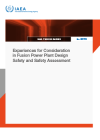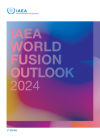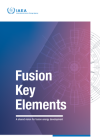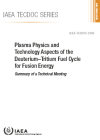Nuclear energy can also be produced by fusion reactions of light nuclei. This technique promises many advantages and has attracted global research and development efforts. The IAEA has supported fusion energy research since its inception and helps Member States exchange and build knowledge on fusion science and technology.
Fusion
International fusion activities and the IAEA’s role
Worldwide research has made impressive progress in fusion and plasma physics. Many scientific questions have been solved in the last years. Controlled nuclear fusion and plasma physics research is currently carried out in more than 50 IAEA Member States. The challenge is to prove that fusion as an energy source is scientifically feasible. Since this will require large, complex and expensive devices to address reactor-relevant physics and technology challenges, international collaboration on fusion research and development is needed.
The IAEA fosters international collaboration and coordination to help close the existing gaps in physics, technology and regulation and move forward in developing the peaceful use of fusion energy. The Agency’s activities in this field cover, among others, plasma physics and fusion power, technologies and material, both for magnetic and inertial fusion.
The world’s most advanced and largest fusion experiment is, with seven international members (China, India, Japan, South Korea, the European Union, the Russian Federation and the United States), the International Thermonuclear Experimental Reactor (ITER) project. Based on the tokamak concept (using a device that confines plasma through a magnetic field), ITER is currently being built in Cadarache, France. The Reactor is designed to achieve a fusion power gain of at least 10 and produce 500 Megawatt (MW) of fusion power. It will also test key technologies necessary for a fusion reactor.
Another fusion initiative is the International Fusion Materials Irradiation Facility (IFMIF), a joint European-Japanese project that will be constructed in Japan and is planned to operate in parallel with ITER. IFMIF will test and select materials that can withstand the extreme conditions produced by high-energy fusion neutrons of future fusion reactors.
Currently in the design stages, the DEMOnstration Power Plant (DEMO) is expected to supply fusion electricity to the grid. DEMO will be a prototype of a commercial power plant built upon ITER. Its construction is expected to take place during the operation of ITER and IFMIF. To achieve its goals, DEMO must have linear dimensions about 15 per cent larger than ITER, and an about 30 per cent greater plasma density.
The IAEA hosts a variety of fusion-related forums, including the biennial Fusion Energy Conference, a series of workshops on the DEMO project, and many technical meetings. It also produces publications on fusion, such as the Fusion Journal and the Fusion Physics Book; creates networks of institutions and scientists to address key issues of common interest; maintains databases for the fusion community; and supports education and training activities on fusion.








